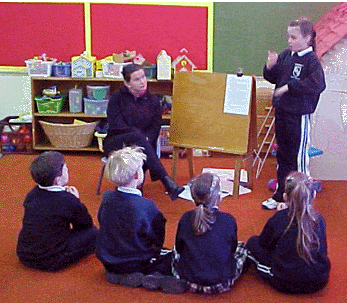The development of the bilingual-bicultural program has been based on the following premises:For most deaf children, Auslan is the natural, dominant language used for communication and thinking (L1).
English is learned as a second language (L2).Learning a spoken language is not a language acquisition process for most deaf children. It cannot occur naturally through environmental exposure.
Deaf children cannot absorb spoken language by hearing it spoken in their environment. It must be taught.
Children should develop mastery of their L1 before learning an L2. With good conceptual and linguistic skills, children have "pegs" on which to hang new learning.
The informal language used for interpersonal communication is very different from the language associated with the higher order thinking skills such as hypothesising, evaluating, inferring, generalising, predicting and classifying. These are the language skills which are related to academic learning and the development of cognition.
For effective learning to take place the teaching of new concepts and/or academic content must occur in the L1.
Deaf children's L1 (Auslan) can be promoted and used for teaching in school at no cost to the development of proficiency in English. Deaf children must be provided with knowledge of and access to the Deaf community through Deaf role models to assist them in developing a healthy self identity and establishing their place in both the Deaf and hearing communities.
Hearing children must be provided with knowledge of the language and culture of the Deaf to enable them to relate effectively with Deaf people.
The Claremont Project follows a developmental maintenance model of bilingualism. Throughout the program an important focus is to assist deaf students to develop a positive self concept and to establish their place in both the Deaf and hearing communities.

Want more information?
Contact us
